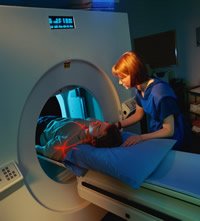In today’s digital age, it is becoming increasingly possible to diagnose illnesses and conditions without ever having to set foot inside a doctor’s office. With the advent of virtual scans, you can now take charge of your health and get results quickly and easily. In this article, we will explore the different types of full body scans available and how they can help you in monitoring your health from the comfort of your own home.
Table Of Contents
What is a Virtual Scan?
A virtual scan is a type of medical scan that uses imaging technology to create a 3D image of the body. This image can be used to diagnose a variety of conditions, including heart disease, cancer, and bone fractures. Virtual scans are less invasive than traditional medical scans, and they can be done in a matter of minutes.
Types of Virtual Scans: Colonoscopy, Body Scan, Heart Scan
There are three types of virtual scans: colonoscopy, body scan, and heart scan.
Colonoscopy: This type of virtual scan is used to examine the large intestine (colon) for abnormalities. A colonoscopy can be used to diagnose and treat conditions such as Crohn’s disease, ulcerative colitis, and colon cancer.
Body Scan: A body scan is a whole-body imaging test that uses low-dose X-rays to detect problems such as cancer, infections, and bone fractures. Body scans are not used to diagnose specific conditions, but they can help doctors identify areas that need further testing.
Heart Scan: A heart scan is a type of virtual cardiac stress test that uses low-dose CT technology to create images of the heart. Heart scans are used to diagnose coronary artery disease, assess the risk of heart attack, and evaluate the effectiveness of treatments for heart conditions.
Benefits of Virtual Scans
Virtual scans offer a number of benefits over traditional in-person scans. Perhaps the most obvious benefit is that you can receive a virtual scan from the comfort of your own home. This means no more making appointments and traveling to clinics or hospitals for scans.
Another big benefit is that virtual scans are often much cheaper than traditional ones. This is because there is no need for expensive equipment or staff, so the savings are passed on to you. Virtual scans can also be done much faster than traditional ones, so you won’t have to wait as long for your results.
Finally, virtual scans offer a higher degree of accuracy than traditional ones. This is because they can be tailored specifically for you and take into account all of your individual health information. This means that you’re more likely to get an accurate diagnosis from a virtual scan than from a traditional one.
Tips for Preparing for a Virtual Scan
If you’re looking to get a virtual scan, there are a few things you can do to prepare. First, it’s important to have a clear understanding of what you’re hoping to get out of the scan. What are your specific health concerns? What are your goals for the scan? Once you have a clear idea of what you want, be sure to communicate this with the provider.
Next, it’s helpful to gather all relevant medical records and information beforehand. This will help the provider get a better sense of your health history and current condition. Make sure to include any recent blood work or imaging results. If you have any allergies or medical conditions that might affect the scan, be sure to mention these as well.
Finally, take some time to relax before your scan. The more relaxed you are, the better the images will be. Avoid caffeine and alcohol before the scan, and try to find a comfortable position.
How to Interpret the Results of a Virtual Scan
A virtual scan is a type of medical imaging that uses computer-generated images to diagnose a variety of health conditions. While virtual scans are not as detailed as traditional imaging techniques, they can be used to quickly and easily diagnose a number of different health conditions.
When interpreting the results of a virtual scan, it is important to keep in mind that these images are not as detailed as those produced by traditional medical imaging techniques. As such, they should be used as a guide rather than a definitive diagnosis. If you have any concerns about the results of your virtual scan, please discuss them with your doctor.
Alternatives to Virtual Scans
If you’re looking for alternatives to virtual scans, there are a few options available. You can opt for a traditional CT scan or MRI, which will provide more detailed images of your body. However, these scans can be expensive and may not be covered by your insurance. Another option is to visit a radiology center for an X-ray or ultrasound. These tests are less expensive than CT scans or MRIs, but they won’t provide as much detail. Finally, you can always talk to your doctor about other diagnostic tests that may be right for you.
Conclusion
Virtual scans are an invaluable resource for those who need to quickly and easily diagnose their health issues. With access to highly accurate imaging technology, virtual scans allow you to assess your health in the comfort of your own home. Whether it’s analyzing a tumor, identifying potential heart problems or any other medical issue, virtual scans provide fast and reliable results. As healthcare continues to evolve, more people will undoubtedly take advantage of the convenience that virtual scanning provides, enabling them to receive a diagnosis faster than ever before.
Read also : balthazarkorab
